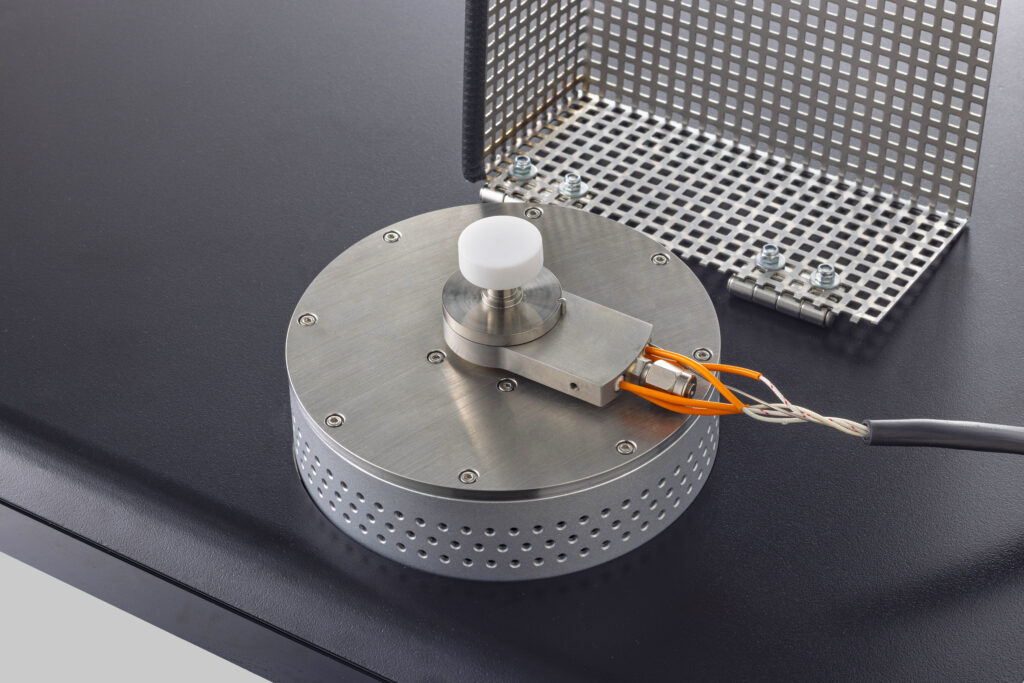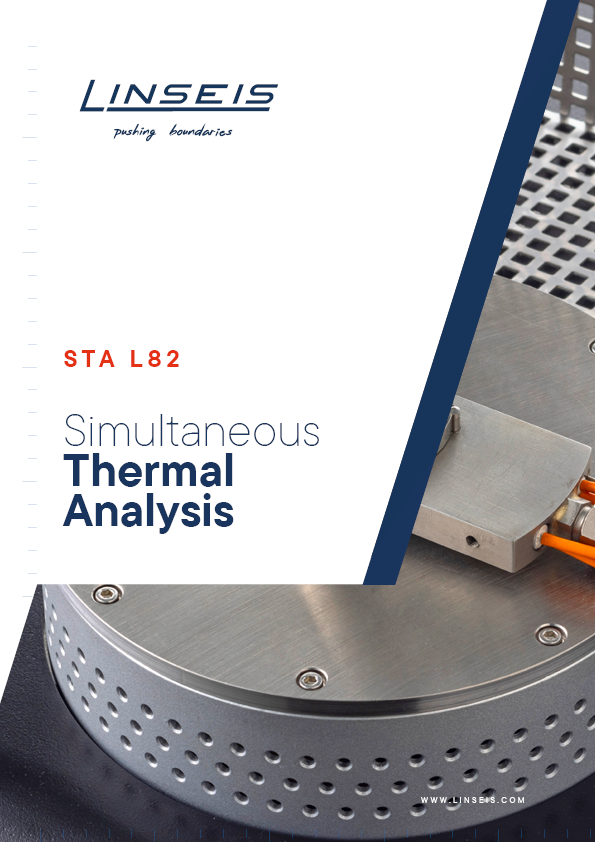Description
To the point
The STA L82 has been optimized for the analysis of materials in a temperature range up to 1100°C, which mainly includes organic materials. The LINSEIS HiRes option allows analyzing mass change effects with highest possible accuracy by effective trigger heating rate changes. The software can detect a mass change due to oxidation or decomposition and can automatically adjust the heating rate or stop heating. After the mass change is over, the system continues heating according to the set profile. This allows a better separation of effects that are taking place shortly after each other or almost similar. The LINSEIS STA L82 is a high-precision thermal analyzer for simultaneous thermal analysis (STA), combining thermogravimetric analysis (TGA) and differential scanning calorimetry (DSC) in one device. Its integrated furnace control enables precise heating with minimal overshoot, making it ideal for diverse applications in material characterization for research and quality control.
Design
Build in furnace and gas control with low thermal mass for unmatched heating and cooling rates.
Sample robot
Optional 90 position samplerobot is available.
New vacuum tight furnace for coupling
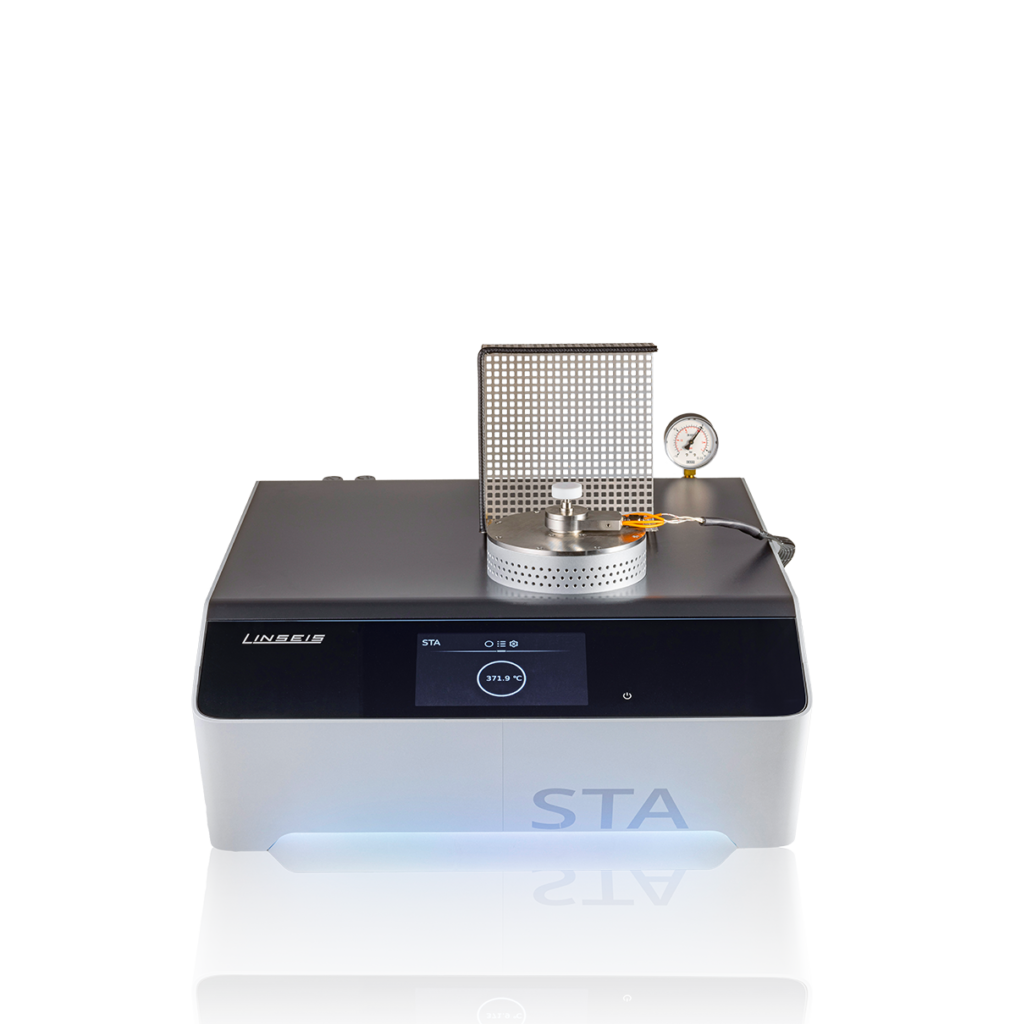
New features
So we can help you
as quickly as possible

Software improvements
- Lex Bus Plug & Play: Our latest hardware interface Lex Bus revolutionizes the way data is communicated within our systems.
Lex Bus enables the seamless and efficient integration of new hardware and software tools. - Improved oven control: Our new and further improved oven control offers more precise temperature control, which leads to better measurement results through a better temperature sequence according to your wishes and requirements.
- New software with user interface: Our communication is now even more focused on the needs of our customers, so that you are always informed about the current status and receive support whenever it is needed.
- Process security: We have optimized our software for process security so that your data is protected at all times and can be processed in a fail-safe manner.
- Error messages and bug fixes: Our system automatically detects errors and bugs, which are immediately documented and rectified to minimize downtime.
- Automatic updates and new functions: Our software receives regular automatic updates that not only improve security, but also continuously provide new functions.
- Permanent system monitoring: Our software constantly monitors the system parameters to ensure optimum performance.
- Preventive maintenance and problem detection: Our preventive maintenance approach detects problems and wear before they can cause damage and keeps your device in top shape.
Linseis Lab Link
With Linseis Lab Link, we offer an integrated solution for eliminating uncertainties in measurement results.
With direct access to our application experts via the software, you can receive advice on the correct measurement procedure and how to evaluate the results.
This direct communication ensures optimal results and maximizes the efficiency of your measurements for accurate analysis and research and a smooth process flow.
Electronic upgrade
The new measuring electronics offer significant performance improvements, inspired by the architecture of the “Linseis Digital Balance”.
The advantages of this new digital balance architecture include:
- Minimization of drift: Ensures consistently high precision over long periods of time.
- Improved resolution: Unique sub-microgram resolution.
- Highest accuracy: Improves the reliability of your measurement results.
- Reproducibility: Ensures consistent results with repeated measurements.
Design improvements
The new device design is characterized by an elegant aluminium housing that is both robust and aesthetically pleasing.
The LED status bar provides a user-friendly visualization of important information.
A touch panel enables intuitive operation and contributes to a modern user experience that combines convenience and functionality.
The new device design focuses on ergonomic operation.
New hardware features:
- Tri-Couple DTA measuring system: DTA measuring system with three thermocouples for the smallest endo-/exothermic effects in inhomogeneous samples
- Jacketed DTA measuring system for corrosive samples
- Patented “Forced Flow” method: Enables forced flow through your TG or TG-DTA.
Our system enables a forced flow through the sample, whereby up to 100 % of the reaction gas is supplied directly to the sample.
This novel method enables scalable measurements for the first time, allowing precise analysis under real conditions.
Unique features

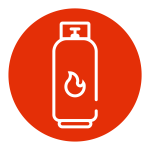

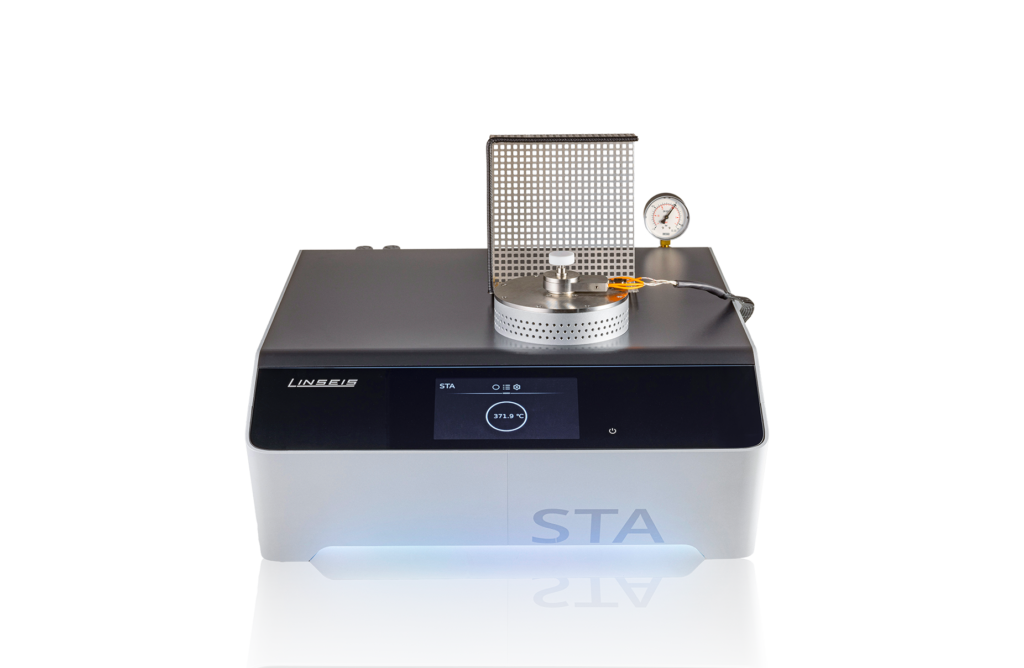
Accessories starter kit
Optional sample robot
Large temperature range
Shielded DTA
for corrosive
applications
Moisture &
Water vapor
Vacuum and
controlled atmosphere
Automatic evacuation
and calibration
Questions? We're just a call away!
+1 (609) 223 2070
+49 (0) 9287/880 0
Our service is available Monday to
Thursday from 8 am to 4 pm
and Friday from 8 am to 12 pm.
We are here for you!
Specifications
MODEL | STA L82 |
|---|---|
| Temperature range: | RT up to 1000°C |
| Vacuum: | 10-2 mbar (for operation below 800°C) |
| Heating speed: | 0.01 up to 100K/min |
| Temperature precision: | 0.001°C |
| Sample robot: | Optional 42 / 90 |
TG | |
|---|---|
| Resolution: | 0.1 μg |
| Sample weight: | The balance can recognize the weight automatically |
| Measuring range: | 25 / 2500 mg |
DSC | |
|---|---|
| DSC sensors: | E /K / S |
| DSC resolution: | 0.3 / 0.4 / 1 μW |
| Calorimetry sensitivity: | ca. 4 / 6 / 17.6 μW |
DTA | |
|---|---|
| DTA resolution: | 0.03 nV |
| Sensitivity: | 1.5 μV / mW |
| DTA measuring ranges: | 250 7 2500 μV |
MODEL | STA L82 HIRES |
|---|---|
| Temperature range: | RT up to 1000°C |
| Sample weight: | up to 5 g |
| Resolution: | 0.01 ug |
| Measuring system: | E/K/S |
| Vacuum: | 10E-2 mbar |
| Cooling rate: | < 15min (1000°C - 100°C) |
Sensors:TG-DTA TG-DSC TG-DSC (Cp) | |
Options: | |
| DTA - Calc.: | optional |
| Gas control: | optional |
| Sample robot: | 90 positions |
Sensors
The Linseis STA can be equipped with an unmatched amount of different user exchangeable TG-DSC, TG-DTA or TG sensors. Each sensor is available with different thermocouples to provide the highest sensitivity for the desired temperature range and application. Additinoally, there are multiple crucible types available that enables the user to find the matching combination for his application.


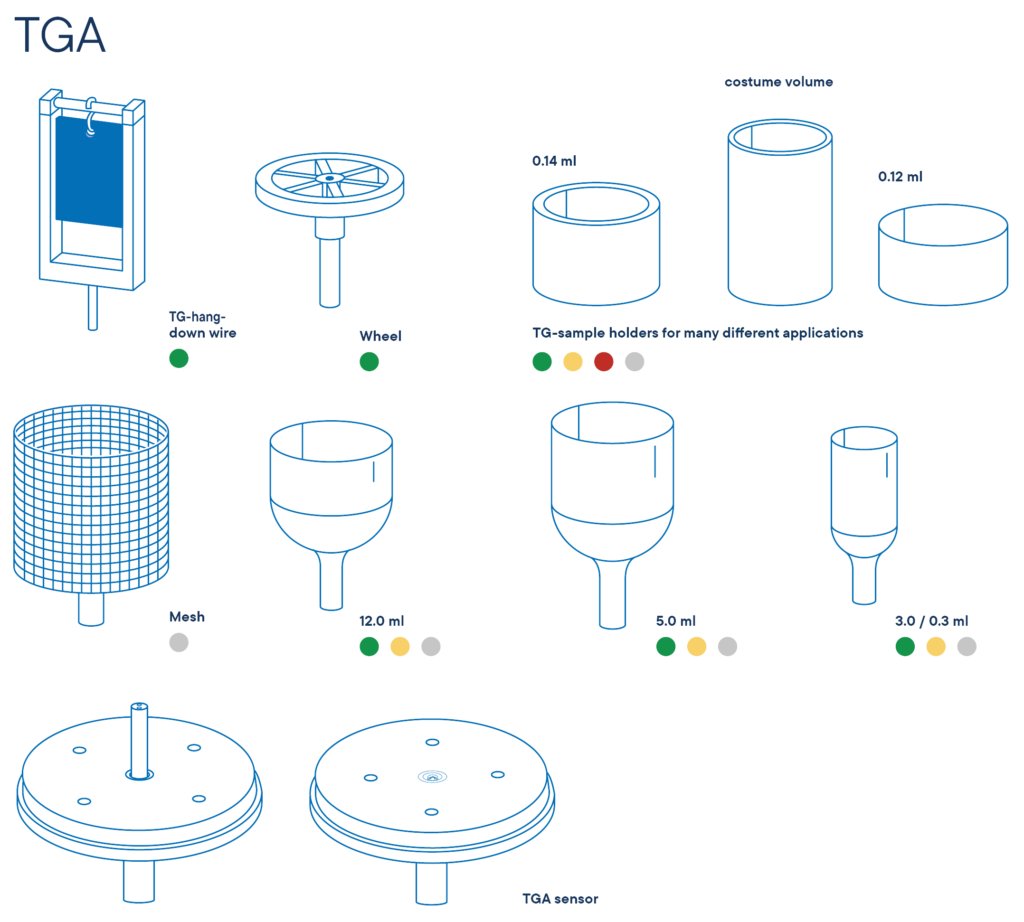
Beam Balance
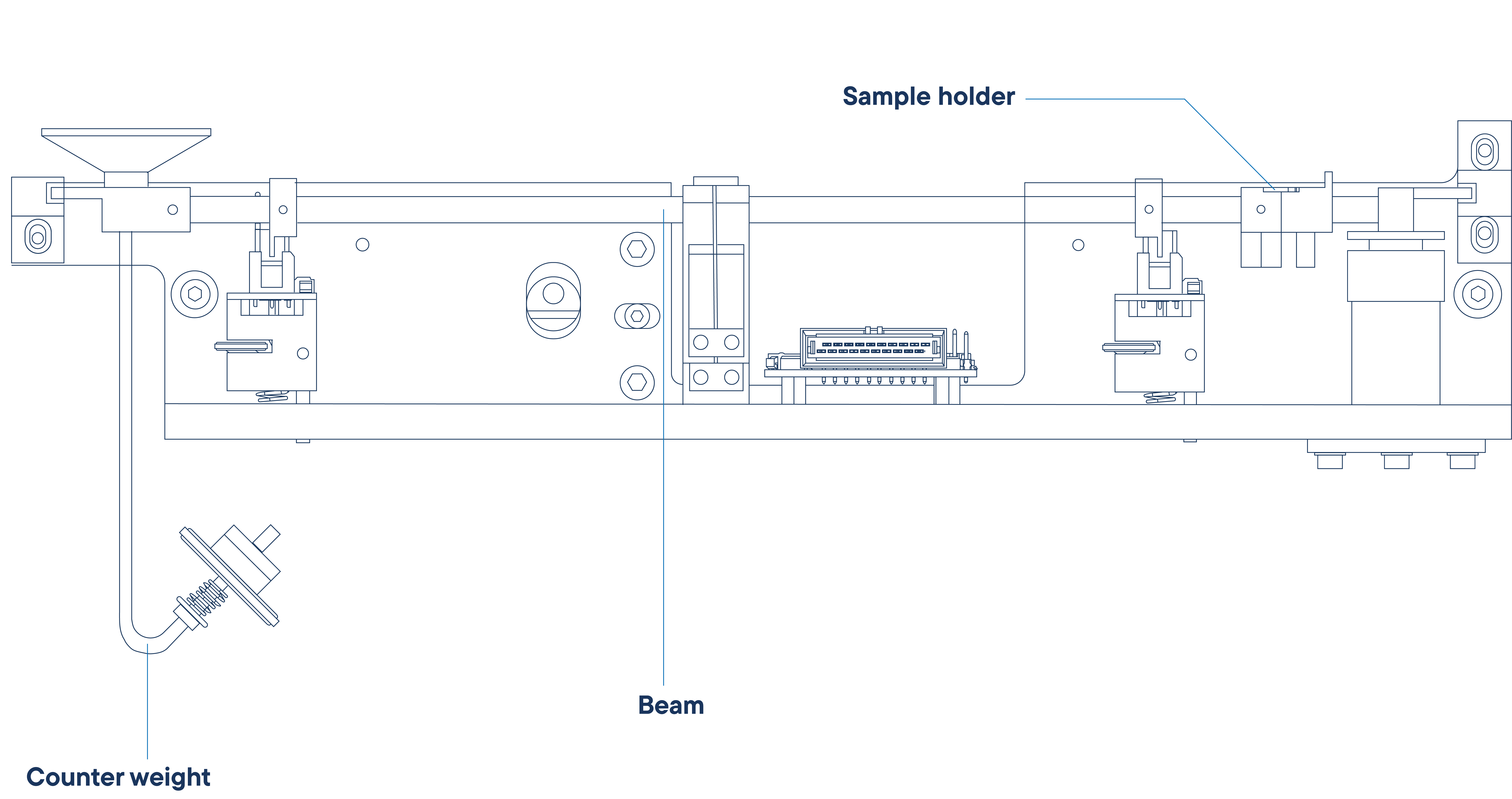
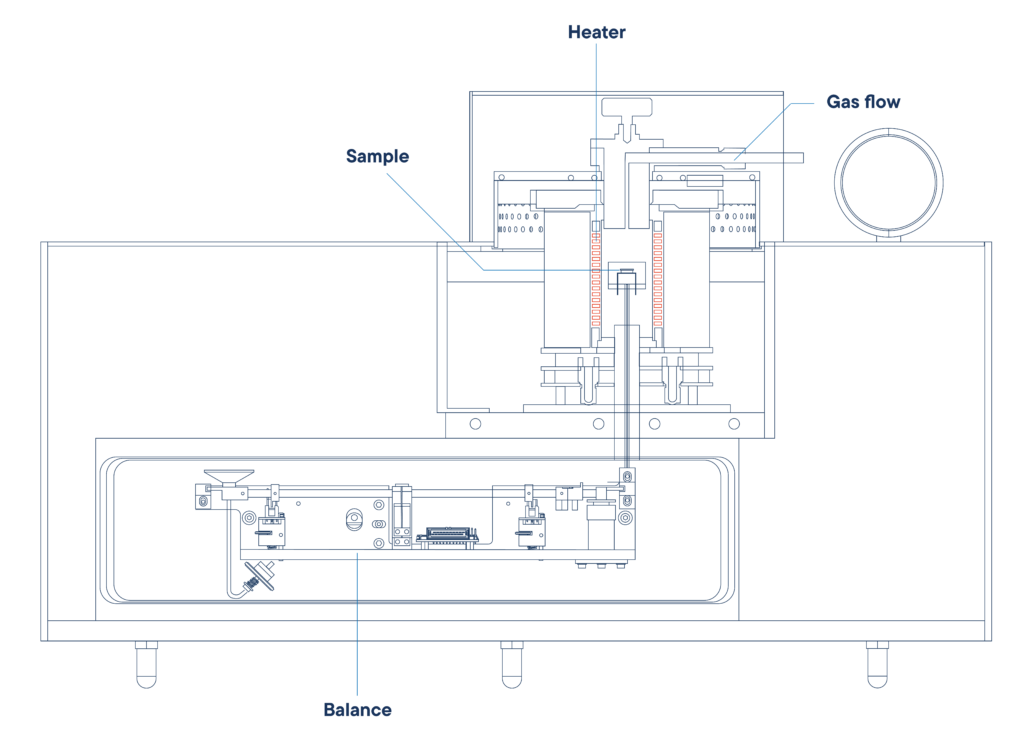
Software
Making values visible and comparable
The powerful LINSEIS thermal analysis software, which is based on Microsoft® Windows®, performs the most important function in the preparation, execution and evaluation of thermoanalytical experiments, in addition to the hardware used.
With this software package, Linseis offers a comprehensive solution for programming all device-specific settings and control functions, as well as for data storage and evaluation.
The package was developed by our in-house software specialists and application experts and has been tried and tested over many years.
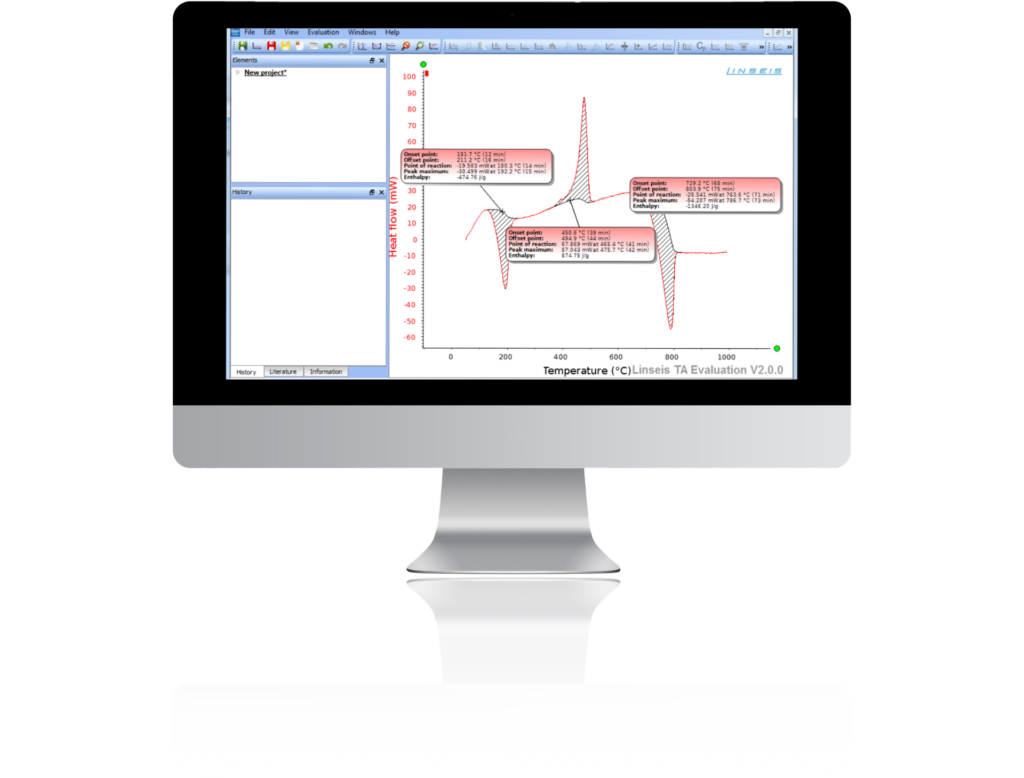
General functions
- Real-time color display
- Multi-method analysis (DSC TG, TMA, DIL, etc.)
- Program for text editing
- Automatic and manual scaling
- Repeat measurements with minimal parameter input
- Display of the axes freely selectable (e.g. temperature
e.g. temperature (x-axis) against delta L (y-axis)) - Mathematical calculations (e.g. first and second derivatives)
- Saving complete evaluations
- Multitasking function
- Multi-user function
- Zoom function for curve sections
- Curve comparison with up to 50 curves
- Online Help Menu
- Free labeling
- ASCII import of data
- EXCEL® and ASCII export of measurement data
- Storage of evaluations
- Evaluation of the current measurement
- Data smoothing
- Zero curves are offset
- Cursor function
- Statistical curve evaluation (mean value curve with confidence interval)
- Repeat measurements with minimal parameter input
- Tabular printout of the data and expansion coefficients
- Calculation of Alpha Phys, Alpha Tech, relative expansion L/L0
- Curve arithmetic, addition, subtraction, multiplication
- Programmable gas control
- Data security in the event of a power failure
- Protection against thermocouple breakage
- Statistical evaluation package
- Automatic calibration
- Optional kinetics and service life prediction
- Software packages
TG properties:
- Relative (%) and absolute (mg/ug) mass change
- Evaluation of the mass change
- Residual mass determination
- 1st and 2nd derivative (peak temperature of the mass change)
- “How to dynamic rate TGA measurement” (optional service for a fee)
HDSC features:
- Complete glass transition determination
- Specific heat (Cp) determination
- Multible measuring / melting points for temperature calibration
- Peak flat / enthalpy determination (various baseline types)
- Enthalpy determination taking into account the change in mass
- Determination of onset, peak, inflection point and final temperature
Measuring system
The LINSEIS Thermal Library software package is an option for the well-known, user-friendly LINSEIS Platinum evaluation software, which is integrated in almost all our devices.
The Thermal Library allows you to compare the complete curves with a database containing thousands of references and standard materials in just 1-2 seconds.
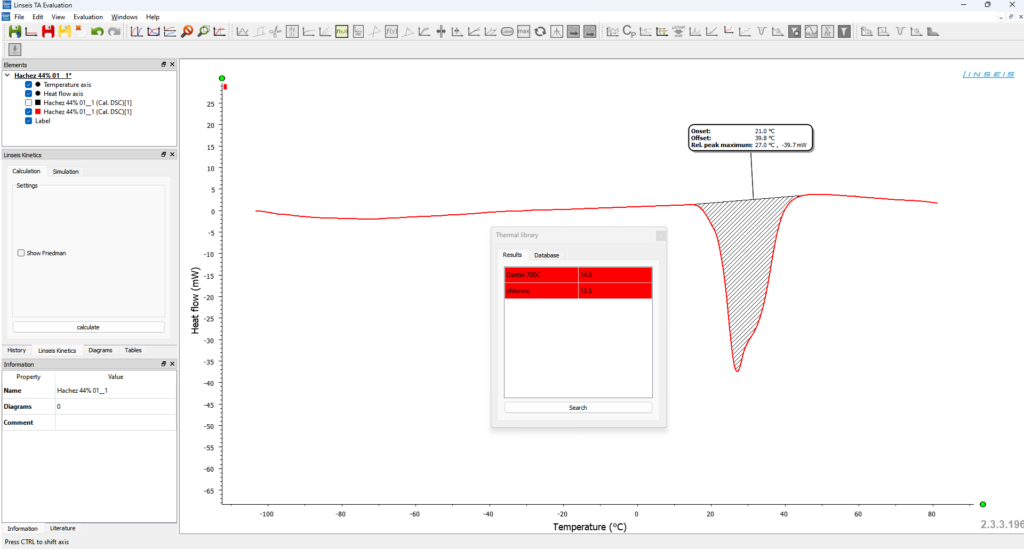
Multi-instrument
All LINSEIS instruments DSC, DIL, STA, HFM, LFA, etc. can be controlled via a software template.
Multilingual
Our software is available in many different user-interchangeable languages, such as: English, Spanish, French, German, Chinese, Korean, Japanese, etc.
Report generator
Convenient template selection for creating individual measurement reports.
Multi-user
The administrator can set up different user levels with different rights to operate the device.
An optional log file is also available.
Kinetic software
Kinetic analysis of DSC, DTA, TGA data to investigate the thermal behavior of raw materials and products.
Database
The state-of-the-art database enables simple data management with up to 1000 data records.
Applications
Application example: Decomposition of rubber
This measurement of an industrial rubber sample was carried out with a simultaneous thermal analyzer STA L82, starting at nitrogen atmosphere. The sample was heated in three steps with each 30 K/min. The blue curve shows the relative weight loss. In a first weight loss step, the dehydration of the sample takes place. The amount of water was 9.3 %. The corresponding DTA signal (purple curve) did not show any effect during the evaporation of water.
In the second reaction step, the volatile components are released by pyrolysis un- der N2 atmosphere. The amount of these components is 36.0%. Their release can be identified by an exdothermic reaction peak on the DTA curve. For the third reaction step, the atmosphere is changed to O2, leading to a burn off of the remaining carbon. The loss in weight is 14.3 %. The remaining 40.4 % are inorganic components like ashes, slake or fillers.


Application example: Aspirin
In this application acetylsalycylic acid (Aspirin) was measured by STA L82 with focus on the DSC-signal.
By DSC, decomposition reactions can be observed and substances such as pharmaceuticals compounds can be investigated and identified. The measured ASS sample shows the following effects:
At the beginning of the heating process, some adsorbed water is released, resulting in a weight loss of about 1 %.
At 140°C the melting point of the aspirin is reached, resulting in an endothermic reaction, measured on the DTA trace.
At 60°C, decomposition of the molten drug takes place in several stages.
The decomposition products are volatile, resulting in a total weight loss of almost 100 %.
Well informed
